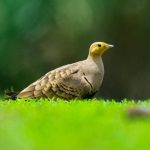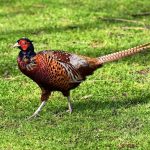Common Name: Lesser Scaup
Scientific Name: Aythya affinis| Size | Diet | Range in Hawaii | Status in Hawaii |
|---|---|---|---|
| 15 in. - 26 in. | insects, crustaceans, and mollusks | Common on all islands | Least Concern |
Lesser scaup swimsThe Lesser Scaup (Aythya affinis) is a small diving duck that is found throughout North America. Despite its small size, it is a hardy and adaptable bird that is able to thrive in a variety of habitats, from freshwater lakes and ponds to estuaries and coastal bays.
While the Lesser Scaup is a common sight in many parts of the continent, it is also known to make occasional appearances in more unusual locations, such as Hawaii. In this article, we’ll take a closer look at this fascinating bird and explore its presence in the Hawaiian Islands.
Lesser Scaup
Appearance
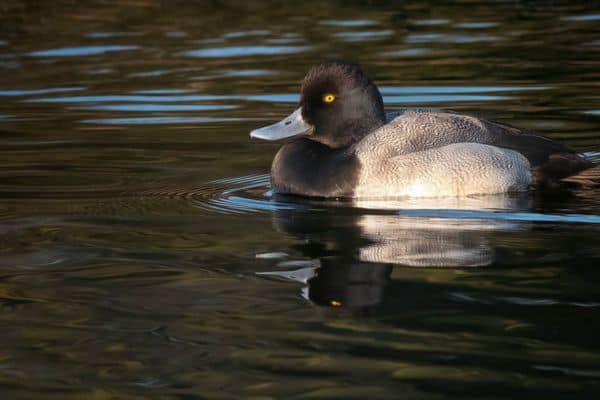
The Lesser Scaup is a strikingly beautiful bird with a distinctive appearance. The male of the species has a glossy black head and neck, while the rest of its body is a rich, dark brown.
Its wings are gray with white patches, and its bill is blue-gray with a black tip. Females, on the other hand, have a brown head and neck with a lighter brown body and grayish-brown wings. Both males and females have bright yellow eyes. The Lesser Scaup measures around 15 inches in length, with a wingspan of approximately 26 inches.
Diet
They feed primarily on aquatic plants and invertebrates. Its diet includes a variety of plant matter, such as seeds, stems, and leaves, as well as insects, crustaceans, and mollusks.
This bird is known for its ability to dive to great depths in search of food, staying underwater for up to 25 seconds at a time. The Lesser Scaup is also a filter feeder, using its specialized bill to strain small organisms and debris from the water.
Its diverse diet allows it to thrive in a variety of aquatic habitats, from shallow ponds to deep lakes and coastal bays.
Nesting
The Lesser Scaup is a monogamous bird that typically nests in wetland areas near water. The female constructs a nest made of grasses and other vegetation, lining it with down feathers for warmth and comfort.
The nest is usually built on the ground, but can also be found in shrubs or other elevated areas. The female lays a clutch of 8-12 eggs, which she incubates for approximately 25 days.
Once the eggs hatch, the female leads the ducklings to the water, where they will learn to swim and feed on their own. The Lesser Scaup is a devoted parent, with both the male and female taking an active role in caring for the young.
This bird’s nesting habits are an important part of its life cycle, ensuring the survival of future generations of this beautiful and fascinating species.
Behavior
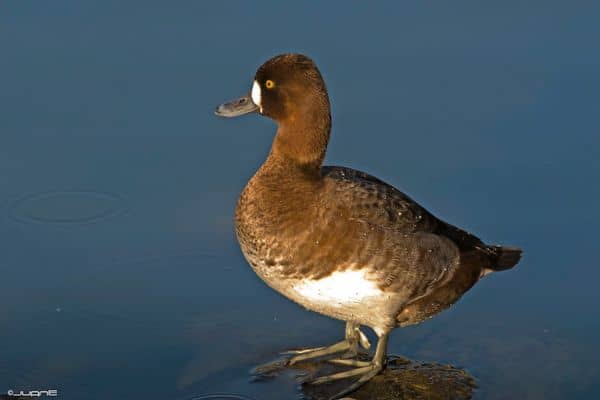
The Lesser Scaup is a social bird that is often found in large flocks during the non-breeding season. During this time, they engage in a variety of behaviors, such as diving for food, preening their feathers, and engaging in courtship displays.
Males will often perform elaborate displays to attract a mate, including head bobbing, wing flapping, and vocalizations. The Lesser Scaup is also known for its unique vocalizations, which include a variety of whistles, grunts, and quacks.
This bird is a skilled swimmer and diver, able to stay underwater for extended periods of time in search of food. Despite its social nature, the Lesser Scaup can also be territorial during the breeding season, defending its nesting area against intruders.
Habitat
The Lesser Scaup is a bird that is well adapted to a variety of aquatic habitats. It can be found in freshwater lakes, ponds, and rivers, as well as coastal bays and estuaries.
This bird prefers shallow waters with abundant aquatic vegetation, which provides both food and cover. During the breeding season, the Lesser Scaup nests in wetland areas near water, constructing its nest on the ground or in elevated areas such as shrubs.
During the non-breeding season, this bird is often found in large flocks, roosting on open water or on shorelines. The Lesser Scaup is a migratory bird, with populations in North America wintering in Mexico and the southern United States, while populations in Eurasia winter in southern Europe and northern Africa.
Range
According to the DLNR Hawaii website, the Lesser Scaup is a bird species that is commonly sighted on all of the main Hawaiian islands, including Oahu, Maui, Kauai, and Hawaii Island.
While the Lesser Scaup is not a native species to Hawaii, it is known to occasionally appear in the islands during the winter months, when birds become disoriented during migration and end up in Hawaii by mistake. The wetland areas of the Pearl Harbor National Wildlife Refuge on Oahu are a particularly popular spot for sightings of this bird.
Conservation Status
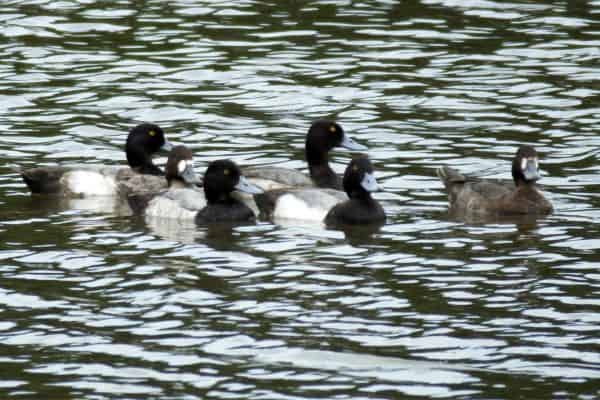
The Lesser Scaup is a bird species that is currently listed as a species of “Least Concern” by the International Union for Conservation of Nature (IUCN). While the overall population of this bird appears to be stable, there are some concerns about the potential impact of habitat loss and degradation on local populations. The Lesser Scaup relies on wetland areas for nesting, feeding, and roosting, and these habitats are often threatened by human development, climate change, and other factors.
Interesting Facts
1. Known for its unique vocalizations
The Lesser Scaup is known for its unique vocalizations, which include a variety of whistles, grunts, and quacks.
2. A migratory bird
The Lesser Scaup is a migratory bird, with populations in North America wintering in Mexico and the southern United States, while populations in Eurasia winter in southern Europe and northern Africa.
3. A skilled swimmer and diver
The Lesser Scaup is a skilled swimmer and diver, able to stay underwater for up to 20 seconds at a time.
4. Monogamous bird
The Lesser Scaup is a monogamous bird, with both the male and female taking an active role in caring for the young.
5. Popular game bird
This bird species is a popular game bird, with hunting regulated by state and federal agencies in North America.
Frequently Asked Questions
1. How long do Lesser Scaups live?
The Lesser Scaup is a relatively short-lived species, with a maximum lifespan of around 11 years in the wild.
2. Are Lesser Scaups social birds?
Yes, the Lesser Scaup is a social bird that is often found in large flocks during the non-breeding season. During this time, they engage in a variety of behaviors, such as diving for food, preening their feathers, and engaging in courtship displays.
3. What is the vocalization of the Lesser Scaup like?
The Lesser Scaup is known for its unique vocalizations, which include a variety of whistles, grunts, and quacks. Males will often vocalize during courtship displays to attract a mate.

